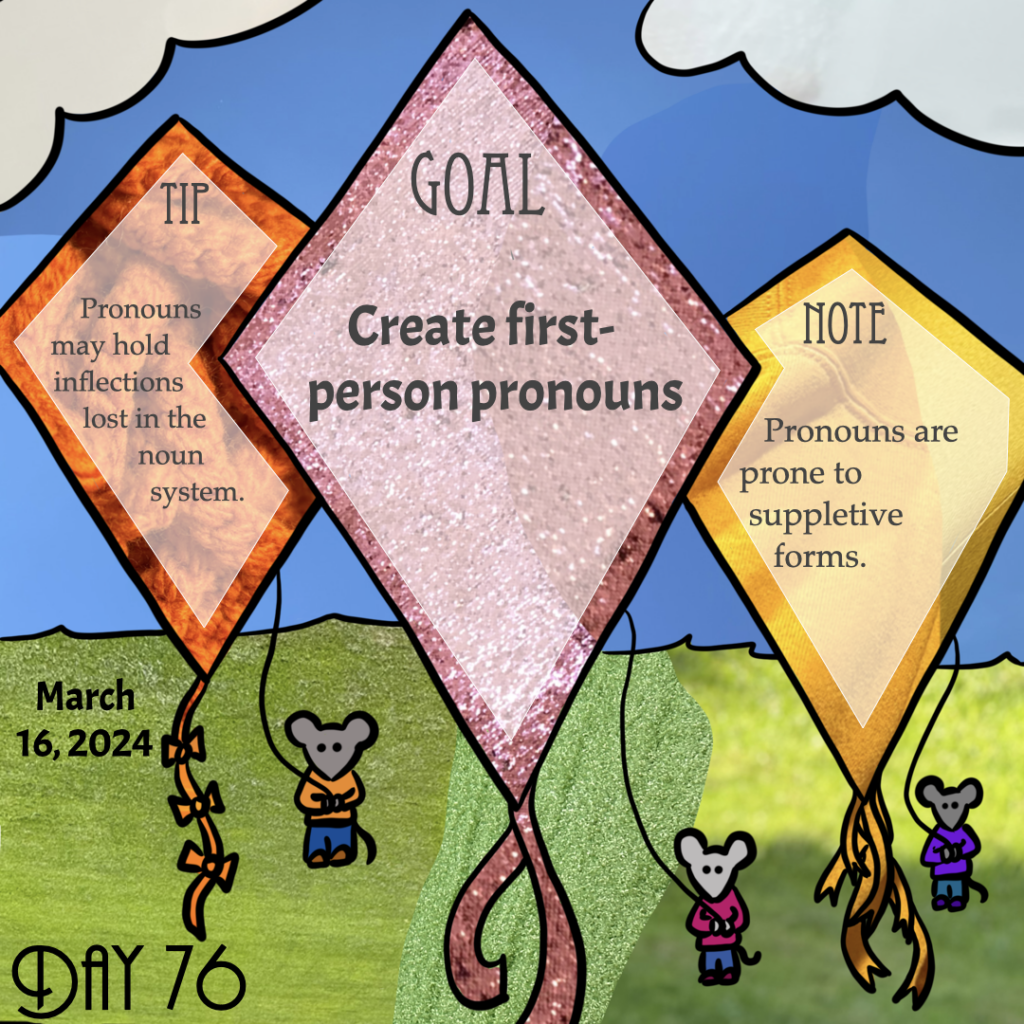
Goal: Create first-person pronouns
Note: Pronouns are prone to suppletive forms.
Tip: Pronouns may hold inflections lost in the noun system.
Work focus: Create/Make/List
Today’s task is to actually create your first-person pronouns! If you don’t have any nominal inflections in your language, you may only have one form to create (which will then be used to mean “I, me, we, us” and potentially even “mine, ours”). If you do have inflections, though, you will need to create all the forms you need for the numbers and/or cases marked in your language.
You can use a regular inflectional strategy to get your series of pronoun forms. For instance, if your plural marker is the prefix ko-, and your first-person singular pronoun is na, your first-personal plural form could be kona. You could also choose to use that inflected form and reduce it to a smaller phonological form, such as reducing kona to kwa, ka, or ŋa. Another strategy is to create suppletive forms, where the singular form is completely different from the plural form (i.e. they have different proto-forms).
I’ve mentioned this several times before, but remember that pronouns can hold on to inflections that are lost on the nouns, such as English’s object pronoun forms like “me” and “us”, where nouns don’t have any object forms.
- I see the dog.
- The dog sees me.
- We love cats.
- Cats love us.
Notice that the noun forms stay the same whether they are subjects or objects, but the pronouns shift forms in those positions. Historically, nouns had different inflections for cases, but those were lost over time while the pronouns retained the distinctions (words used more frequently are able to hold on to distinctions even as they are lost in other systems).
The goal is that, by the end of today, you will have all the first-person pronoun forms you will need for your language!
